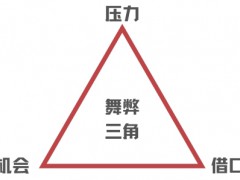據油價網6月26日報道,油價上漲和資本支出規定正在為今年全球勘探和生產公司創紀錄的最高自由現金流奠定基礎。而美國頁巖公司——將產生 600 億美元的自由現金流——準備在全球上游業務創紀錄的自由現金流中發揮關鍵作用。獨立研究公司雷斯塔能源(Rystad Energy) 在一份新報告中表示,美國頁巖地區預計將成為資本支出規定和高油價的最大受益者,也是全球上游業務有史以來最高自由現金流的最大貢獻者。
70美元的油價當然會有很大幫助,但也是每一家石油公司的資本規定——從石油巨頭到美國獨立石油公司——促成了今年創紀錄的現金流。
今年自由現金流將達到創紀錄的3480億美元
今年全球上市石油公司的總自由現金流量(不包括融資或對沖效應的上游活動產生的所有現金流量)將飆升至創紀錄的3480億美元。根據雷斯塔能源的估計,這將比2008年創下的3110億美元的歷史高點高出370億美元。當時,就在金融危機爆發前,當年的平均油價為每桶100美元。
據雷斯塔能源預測,創紀錄現金流的關鍵驅動力將是美國頁巖地區,據估計,在對沖效應出現之前,該地區將獲得近600億美元的自由現金流。
這將是美國頁巖鉆探商財務狀況的一次大逆轉,自頁巖革命開始以來,美國頁巖鉆探商十年來一直在努力創造正的自由現金流。
“頁巖新時代”的曙光
據彭博情報(Bloomberg Intelligence)估計,由于嚴格的資本支出和較高的油價,2021年美國頁巖生產商預計將產生總計300億美元的自由現金流。這與過去的繁榮和蕭條周期截然不同,當時美國頁巖氣區塊為了開采和生產盡可能多的石油而負債累累,導致油價下跌。
然而,今年可能成為分析師們開始稱之為美國頁巖“新時代”的開始,在這個新時代,股東回報和償還債務將優先于產量增長和創紀錄的產量。
根據德勤(Deloitte)去年的估計,自頁巖首次繁榮以來的15年里,美國頁巖行業損失了3000億美元的凈負現金流,而今年預計從自由現金流中獲得的意外收入僅為這一損失的十分之一。
盡管如此,對今年自由現金流的預期讓分析師們樂觀地認為,頁巖區塊正處于轉折點,至少還會再維持一到兩年。
據雷斯塔能源稱,預計2021年頁巖的自由現金流將超過深水區和淺水區的自由現金流。
這家情報公司表示,傳統的陸上供應部門將獲得最大的自由現金流份額,達到 1600 億美元,但這仍低于這些上游活動在2011年創下的紀錄。
為超額利潤做好準備的石油公司
由于油價上漲、全球需求上升和市場趨緊,所有上市上游公司今年的總收入將比去年增長55%,或近5000億美元。據雷斯塔能源估計,考慮到全球上市勘探開發公司今年的支出水平只會增加2%——得益于各公司仍然嚴格的資本約束規定——生產商的利潤將大幅提高。
雷斯塔能源上游研究主管 Espen Erlingsen表示,在新冠疫情的最初沖擊之后,石油需求逐漸增加,歐佩克 + 繼續抑制市場的交易量。美國致密油活動緩慢增加進一步支撐了隨之而來的高價走勢。 加上持續的低投資環境,勘探與生產公司正享受超額利潤。
例如,由于油價大幅上漲,今年第一季度,能源超級巨頭的收入幾乎回到了疫情爆發前的水平。據分析師表示,隨著本季度油價上漲,收益有望進一步上升。
伍德麥肯茲(Wood Mackenzie)今年初表示,如果原油均價為每桶55美元,油價上漲、保守支出以及去年大幅削減成本的好處將為今年大型石油公司創造創紀錄的現金流創造條件。
考慮到投行和預測機構目前預測今年油價平均至少為每桶65美元,而且越來越多的大型石油公司分析師和高管預測不排除在未來幾個季度油價將短暫飆升至每桶100美元的可能,這一預測甚至可能變得相當保守。
包括頁巖地區在內的E&P公司的當務之急是利用預期的超利潤,創紀錄現金流來償還債務和回報股東。資本控制今年可能會持續,但如果世界要避免在幾年內陷入供應赤字,上游投資將需要增加。
郝芬 譯自 油價網
原文如下:
Dawn Of A New Era For U.S. Shale
Higher oil prices and capital expenditure discipline are setting the stage for the highest free cash flow on record for the world’s exploration and production companies this year. And U.S. shale firms—set to generate $60 billion free cash flow—are primed for playing a key role in the record-breaking free cash flow from global upstream operations. The U.S. shale patch is expected to be the biggest beneficiary of capex discipline and high oil prices, as well as the largest contributor to the highest-ever free cash flows from the upstream business globally, independent research firm Rystad Energy said in a new report.
$70 oil can certainly help a lot, but it is also capital discipline at every single oil company—from supermajors to U.S. independents—that is contributing to record cash flows this year.
Free Cash Flow Set To Hit Record-Breaking $348 Billion in 2021
The world’s public oil firms are set to see their combined free cash flow—all cash flows from upstream activity excluding such from financing or hedging effects—surge to a record-breaking $348 billion in 2021. According to estimates from Rystad Energy, this would be $37 billion higher than the previous all-time high of $311 billion, which was generated in 2008. Back then, just before the financial crisis, oil prices averaged $100 a barrel that year.
The key driver of record cash flows would be the U.S. shale patch, which is estimated to rake in nearly $60 billion in free cash flow before hedging effects, Rystad Energy forecasts.
This would be quite a U-turn in the financial fortunes of U.S. shale drillers, which have struggled to generate positive free cash flow for a decade since the shale revolution began.
The Dawn of ‘New Shale Era’
According to Bloomberg Intelligence estimates, U.S. shale producers are expected to generate a combined $30 billion in free cash flow in 2021 amid disciplined capital spending and higher oil prices. That’s so different from the past boom and bust cycles where the U.S. shale patch loaded up on debt to drill and produce as much oil as possible, contributing to sinking oil prices.
This year, however, could turn out to be the beginning of what analysts have started to call “a new era” for U.S. shale, where returns to shareholders and paying down debts take precedence over production growth and record output.
The expected windfall from free cash flow this year is just one-tenth of the $300 billion in net negative cash flow the U.S. shale industry has lost in the 15 years since the first shale boom, per Deloitte estimates from last year.
Nevertheless, the expectations of free cash flow this year make analysts optimistic that the shale patch is at a turning point and will keep discipline for at least another year or two.
According to Rystad Energy, shale’s free cash flow in 2021 is expected to exceed the free cash flows from both the deepwater and shallow water segments.
The conventional onshore supply segment will earn the biggest share of free cash flow, at $160 billion, but this will still be lower than the record from these upstream activities set in 2011, the intelligence company said.
Oil Firms Primed For Super-Profits
Gross revenues at all public upstream firms are set to surge by 55 percent, or by nearly $500 billion, this year compared to last year, thanks to higher oil prices, rising global demand, and a tighter market. Considering that spending levels of listed E&P firms globally are set for just a 2-percent increase this year—courtesy of still strong capital discipline across the board—producers are set for materially higher profits, Rystad Energy reckons.
“Oil demand has gradually increased after the initial shock of the Covid-19 pandemic, and OPEC+ continues to hold back volumes from the market. The consequent high price movement has been further supported by a slow ramp-up in US tight oil activity. In conjunction with the persisting low investment environment, E&Ps are enjoying super-profits,” Espen Erlingsen, head of upstream research at Rystad Energy, said.
Income at the supermajors, for example, nearly returned to pre-pandemic levels in the first quarter of this year, thanks to dramatically higher oil prices. Further upsides in earnings are on the horizon with this quarter’s oil price rally, analysts say.
Higher oil prices, conservative spending, and the benefits of the massive cost cuts from last year are setting the stage for record cash flows at Big Oil this year if the price of oil averages $55 per barrel, Wood Mackenzie said at the start of this year.
This forecast could even turn out to be quite conservative, considering that investment banks and forecasters now see oil prices averaging at least $65 a barrel this year, and a growing number of analysts and top executives at Big Oil aren’t ruling out a brief spike to $100 per barrel in coming quarters.
The immediate priority for E&P firms, including in the shale patch, will be to use the expected super-profits and record cash flows to pay down debts and reward shareholders. Capital discipline will likely hold this year, but upstream investment will need to rise if the world is to avoid sleepwalking into a supply deficit within a few years.
免責聲明:本網轉載自其它媒體的文章,目的在于弘揚石化精神,傳遞更多石化信息,并不代表本網贊同其觀點和對其真實性負責,在此我們謹向原作者和原媒體致以敬意。如果您認為本站文章侵犯了您的版權,請與我們聯系,我們將第一時間刪除。







